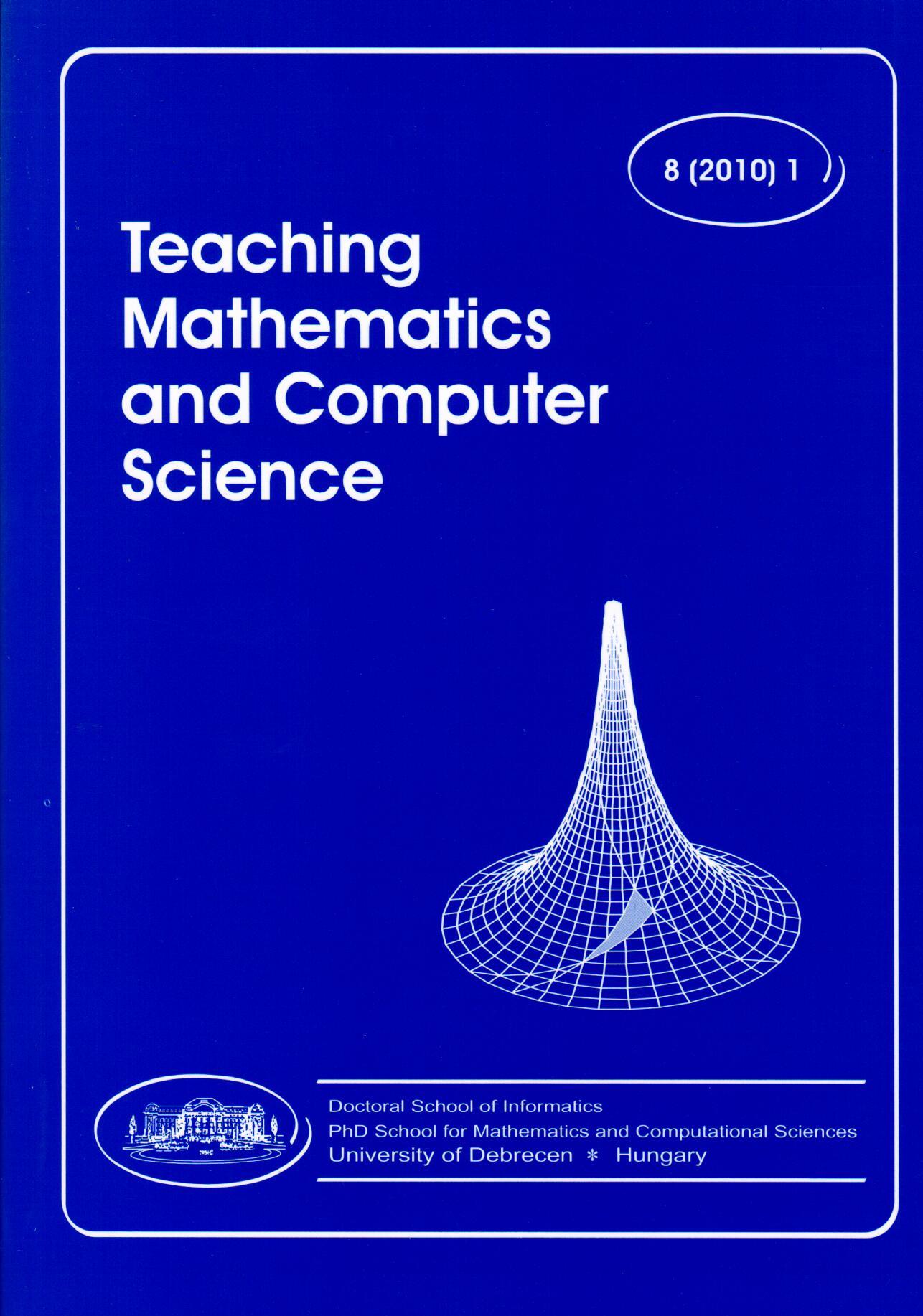Articles
CAS-aided visualization in LATEX documents for mathematical education
Published:
2010-06-01
Authors
View
Keywords
License
Copyright (c) 2010 Masataka Kaneko, Takayuki Abe, Kenji Fukazawa, Masayoshi Sekiguchi, Yuuki Tadokoro, Satoshi Yamashita and Setsuo Takato

This work is licensed under a Creative Commons Attribution 4.0 International License.
How To Cite
Selected Style:
APA
Kaneko, M., Abe, T., Fukazawa, K., Sekiguchi, M., Tadokoro, Y., Yamashita, S., & Takato, S. (2010). CAS-aided visualization in LATEX documents for mathematical education. Teaching Mathematics and Computer Science, 8(1), 1-18. https://doi.org/10.5485/TMCS.2010.0172
Abstract
We have been developing KETpic as a macro package of a CAS for drawing fine LATEX-pictures, and we use it efficiently in mathematical education. Printed materials for mathematics classes are prepared under several constraints, such as "without animation", "mass printings", "monochrome", and "without halftone shadings". Because of these constraints, visualization in mathematical education tends to be unsatisfactory. Taking full advantages of LATEX and CAS, KETpic enables us to provide teaching materials with figures which are effective for mathematical education. The effects are summarized as follows:
(1) The plottings of KETpic are accurate due to CAS, and enable students to deduce mathematical laws.
(2) KETpic can provide adequate pictures for students' various interest. For example, when some students who understand a matter try to modify it, KETpic can give them appropriate and experimental figures.
(3) Even though CAS can draw 3D-figures beautifully and automatically, it is expensive for mass printings and the figures are sometimes not easy to understand. Oppositely, 3D-graphics by KETpic are monochrome, but are richly expressive.
In this paper, we give various examples of LATEX-pictures which we drew by using KETpic. For instance, the picture which is used in order to explain the convergence theorem of Fourier series makes it easier for students to understand the idea that function series converge to another function. Also the picture of skeleton is endowed with clear perspective. KETpic gives us great potential for the teaching of combinatorial mathematics. Through these examples, we claim that KETpic should have great possibilities of rich mathematical expressions under the constraints above mentioned.
(1) The plottings of KETpic are accurate due to CAS, and enable students to deduce mathematical laws.
(2) KETpic can provide adequate pictures for students' various interest. For example, when some students who understand a matter try to modify it, KETpic can give them appropriate and experimental figures.
(3) Even though CAS can draw 3D-figures beautifully and automatically, it is expensive for mass printings and the figures are sometimes not easy to understand. Oppositely, 3D-graphics by KETpic are monochrome, but are richly expressive.
In this paper, we give various examples of LATEX-pictures which we drew by using KETpic. For instance, the picture which is used in order to explain the convergence theorem of Fourier series makes it easier for students to understand the idea that function series converge to another function. Also the picture of skeleton is endowed with clear perspective. KETpic gives us great potential for the teaching of combinatorial mathematics. Through these examples, we claim that KETpic should have great possibilities of rich mathematical expressions under the constraints above mentioned.

 https://doi.org/10.5485/TMCS.2010.0172
https://doi.org/10.5485/TMCS.2010.0172






